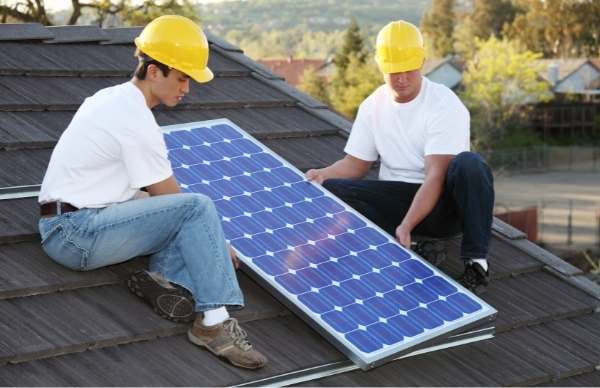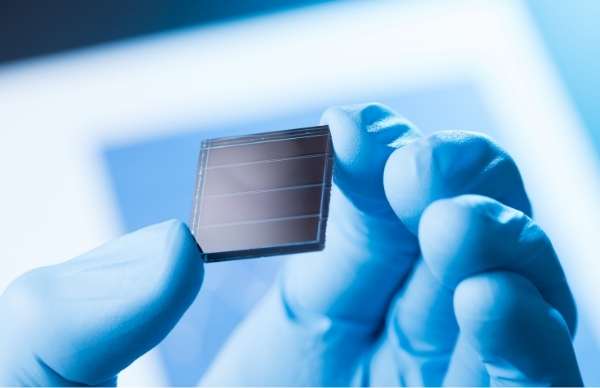
Like many home owners, the idea of going solar to cut down on monthly energy costs sounds like a dream come true. But, unless you’re in Arizona or here with me in Texas, you may not be exposed to the virtually unending supply of sunlight. So you get to wondering, does a solar panel need direct sunlight to work?
A solar panel does not need direct sunlight to work. It can still generate electricity in indirect sunlight or on cloudy days, although you will see a decrease in efficiency anywhere between 30 – 60%, depending on the type of solar panel.
But there are ways to help mitigate this, which I’ll get to below.
Solar Panels and Direct Sunlight
The efficiency and effectiveness of solar panels are often associated with their exposure to direct sunlight. This section explores how direct sunlight impacts solar panel performance and the nuances that define this relationship.
Direct Sunlight and Its Impact on Solar Panels
- Definition of Direct Sunlight: Direct sunlight refers to sunlight that reaches the solar panels without any obstruction, typically during clear, sunny days. This is the most intense form of solar illumination.
- Optimal Conditions for Maximum Efficiency: Solar panels are generally designed to perform best under direct sunlight. The intensity of the sun’s rays directly correlates with the amount of electrical energy generated.
- Efficiency Ratings and Direct Sunlight: Solar panels are often tested and rated under standard test conditions (STC), which assume a certain level of direct sunlight. These ratings are crucial for understanding the maximum potential of a solar panel.
Performance in Varying Degrees of Direct Sunlight
- Peak Sun Hours: This term refers to the time frame when solar irradiance exceeds a specific threshold, typically around 1000 watts per square meter, akin to direct sunlight conditions (1).
- Impact of the Sun’s Position: The angle of the sun, changing throughout the day and seasons, affects the intensity of direct sunlight hitting the panels. Solar panels generate more power when the sun is at its peak position, usually around midday.
- Tracking Systems: Some solar installations use tracking systems to adjust the angle of the panels throughout the day, ensuring optimal exposure to direct sunlight.
Case Studies and Real-World Examples
- Residential Solar Installations: In these settings, roof angle and orientation play a significant role in determining how much direct sunlight panels receive. Examples from different geographical locations can illustrate variances in efficiency due to the amount of direct sunlight.
- Large-Scale Solar Farms: These installations are often strategically positioned and designed to maximize exposure to direct sunlight, showcasing the importance of direct solar irradiance in large-scale energy production (2).
Solar technology’s ability to generate electricity extends beyond the ideal scenarios, accommodating a range of sunlight exposures. This flexibility is pivotal in making solar energy a viable option across diverse geographical locations and varying weather conditions.

Working in Indirect Sunlight and Shade
Understanding the performance of solar panels in indirect sunlight and shaded conditions is important for evaluating overall efficiency and applicability in various environments.
Efficiency in Cloudy, Overcast, or Shaded Conditions
- Performance Under Indirect Sunlight: Solar panels can still generate electricity in the absence of direct sunlight. The photovoltaic cells in the panels can harness diffuse solar radiation, which occurs during cloudy or overcast days.
- Impact of Shade: Shade can significantly reduce the output of a solar panel. Panels under partial shade due to trees, buildings, or other obstructions experience a drop in efficiency, as shaded cells can act as resistors, affecting the entire panel or string of panels.
- Effect of Overcast Conditions: While solar panels are less efficient on overcast days compared to sunny days, they can still produce a significant amount of energy, typically ranging from 10% to 25% of their rated capacity depending on the density of cloud cover.
Technological Advancements
- Improvements in Photovoltaic Cell Technology: Advances in cell technology, such as bifacial solar panels that capture sunlight from both sides, or panels with better spectral response, have enhanced the ability of solar panels to generate electricity in low-light conditions.
- Maximum Power Point Tracking (MPPT): This technology enables solar inverters to adjust the electrical load to maximize power output under varying light conditions, significantly improving efficiency in indirect sunlight.
- Anti-Reflective Coatings: These coatings on solar panels increase their ability to absorb light rather than reflecting it away, enhancing performance in less-than-ideal lighting conditions.
Comparative Analysis of Energy Output
- Direct vs. Indirect Sunlight: The energy output of solar panels in direct sunlight is notably higher compared to indirect sunlight. Data from various studies can illustrate the specific differences in output, often showing that direct sunlight can produce up to 50% more energy than indirect sunlight.
- Quantifying the Efficiency Gap: By examining the performance metrics under different lighting conditions, the efficiency gap can be quantified, providing valuable insights for system sizing and energy forecasting.
- Real-World Implications: For regions with frequent cloudy or overcast weather, this comparison helps in understanding the feasibility and expected performance of solar installations.
Other Influencing Factors
Aside from sunlight intensity, several other factors significantly influence the efficiency of solar panels. Understanding these elements is important for optimizing solar panel performance.

Impact of Temperature
- Temperature Coefficients: Solar panels are affected by temperature changes. Most solar panels are tested at 25°C (77°F), and their performance varies with temperature. Each panel has a temperature coefficient, indicating how its efficiency changes with temperature.
- Heat Effects: Contrary to popular belief, higher temperatures can decrease the efficiency of solar panels. As the temperature rises, the electrical conductivity increases, leading to a slight decrease in voltage and overall efficiency.
- Cooling Strategies: Implementing cooling strategies, such as proper air circulation around panels and using materials with lower heat absorption, can mitigate the negative impact of high temperatures.
Angle and Positioning of Solar Panels
- Optimal Angle for Maximum Sun Exposure: The angle at which solar panels are installed affects their ability to capture sunlight. The optimal angle varies depending on geographical location and the time of year (3).
- Orientation Towards the Sun: In most cases, solar panels are positioned to face true south in the Northern Hemisphere and true north in the Southern Hemisphere to maximize exposure to sunlight.
- Adjustable Mounting Systems: Some systems allow for the adjustment of the panel angle throughout the year to align with the sun’s position, enhancing overall energy yield.
Maintenance and Long-Term Performance Considerations
- Regular Cleaning and Inspection: Dust, debris, and other materials can accumulate on the surface of solar panels, reducing their efficiency. Regular cleaning and inspection are essential for maintaining optimal performance.
- Monitoring for Degradation: Over time, solar panels can experience natural degradation, which affects their performance. Monitoring their output and condition can help in identifying when maintenance or replacement is necessary.
- Longevity and Warranty: Most solar panels come with a performance warranty, typically guaranteeing more than 80% performance after 20-25 years. Understanding and adhering to warranty conditions and performance expectations is crucial for long-term satisfaction.
Maximizing Solar Panel Efficiency
Ensuring optimal performance from solar panels involves more than just their placement in sunny areas. From installation best practices to embracing emerging technologies and providing practical tips, this section outlines ways to maximize solar panel efficiency for both homeowners and businesses.
Best Practices for Installation and Positioning
- Site Assessment for Sunlight Exposure: Conducting a thorough site assessment to determine areas with maximum sun exposure is crucial. This includes considering potential obstructions like trees and buildings that could cast shade.
- Correct Orientation and Tilt Angle: Install panels facing the optimal direction (generally south in the Northern Hemisphere and north in the Southern Hemisphere) and at an angle that maximizes sun exposure throughout the year. This angle varies based on geographical location.
- Professional Installation: Utilizing professional installation services ensures that solar panels are set up correctly and securely, taking into account local environmental factors and building codes.
Emerging Technologies and Future Trends in Solar Panel Design
- High-Efficiency Photovoltaic Cells: Developments in photovoltaic cell technology continue to increase the efficiency of solar panels, with newer models achieving higher energy conversion rates.
- Bifacial Solar Panels: These panels, which capture sunlight from both sides, are becoming more popular. They can generate more power in the same footprint, especially in reflective environments.
- Integrated Solar Solutions: Innovations like solar roof tiles and solar glass are integrating solar technology into building materials, offering aesthetically pleasing and efficient alternatives to traditional panels.

Tips for Homeowners to Optimize Solar Panel Use
- Energy Consumption Analysis: Understanding your energy needs can help in sizing your solar system appropriately, ensuring that it meets your energy demands efficiently.
- Net Metering: Participate in net metering programs if available, which allow for the sale of excess electricity generated back to the grid, offsetting costs.
- Regular Maintenance: Keep solar panels clean and free of debris to maintain efficiency. Regular check-ups can detect and address any issues early on.
- Battery Storage Systems: Consider installing a solar battery storage system to store excess energy for use during non-sunny periods, maximizing the use of generated solar power.
- Smart Energy Management: Implement smart energy management systems to monitor and adjust energy consumption, aligning it with solar energy production patterns.
Maximizing the efficiency of solar panels is an ongoing process that combines proper installation, investigation of emerging technologies, and adopting smart energy practices.
Frequently Asked Questions
What is the Best Angle for Solar Panel Installation?
The optimal angle for solar panels varies depending on your geographical location. Generally, panels should be tilted at an angle equal to the latitude of the location, facing true south in the Northern Hemisphere and true north in the Southern Hemisphere.
Are There Technologies to Improve Solar Panel Efficiency in Low Light?
Technologies like bifacial solar panels, anti-reflective coatings, and advanced photovoltaic materials have been developed to enhance solar panel performance in low-light conditions.
Do Solar Panels Work in Winter?
Solar panels can work during winter. While there may be fewer sunlight hours, solar panels can still be effective, especially if they are free of snow and ice and angled to capture the available sunlight.
Is It Worth Installing Solar Panels in Cloudy Areas?
Yes, it can still be worthwhile to install solar panels in cloudy areas. While efficiency may be lower compared to sunny locations, modern solar panels are designed to capture diffuse solar radiation effectively, making them viable in various weather conditions.
